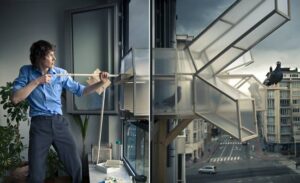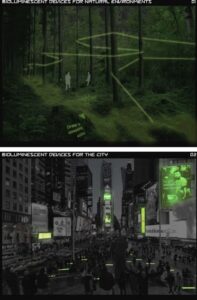Don’t get me wrong, it doesn’t mean to keep our eyes short, but to let us pay more attention to the small things.
Pigeons that are ubiquitous in the UK are sometimes considered to be pests that spread diseases. They defecate everywhere in densely populated cities. If they become urban sanitation cleaners, will we change our views? Can they become part of the urban ecosystem?
Revital Cohen & Tuur Van Balen studio in London proposed using synthetic biology to turn pigeons into a clean part of the city, using design as an effective means of intervention to explore more possibilities of this animal in the composition of the city. The designer believes that if the original genetic ecology of the pigeon can be modified, it may become a potential interface between biotechnology and the city. Therefore, the project hopes to feed pigeons by designing and cultivating “a harmless bacteria – like lactic acid bacteria in yogurt”, changing the pigeon’s diet so that it can produce feces with detergent function and produce Defecation soap, as a part of city cleaning.

Two devices made by this project, one is to encourage pigeons to stay on the windshield of parked cars, so that the windshield can get pigeon defecation soap and become a natural detergent. The second is to use the pigeon house itself as an extension of its own building, allowing the pigeons to stay, be fed and cared for, and guide them through different exits so that it can disinfect the entire city.
Another project with the similar concept, is utilizing the bioluminescence of biological populations, a kind of bacteria and algae that naturally glow in the dark, design and manufacture light-emitting devices, using the properties of organisms themselves, as a sustainable solution and applied in cities.

The light-emitting device does not require metal, industrial manufacturing or electricity, nor does it generate artificial waste, and can be applied to public environment lighting and billboards such as streets, parks, highways, signs, etc. Combining the natural and chemical reactions produced by organisms with the urban environment and the architectural environment, while meeting the urgent need to improve the ecological performance of the building, the natural environment and the building itself are well combined, and the true To achieve sustainability. These microorganisms can grow on agar and continue to multiply.
Figure1. https://www.cohenvanbalen.com/work/pigeon-dor
Figure2. https://www.lafargeholcim-foundation.org/

